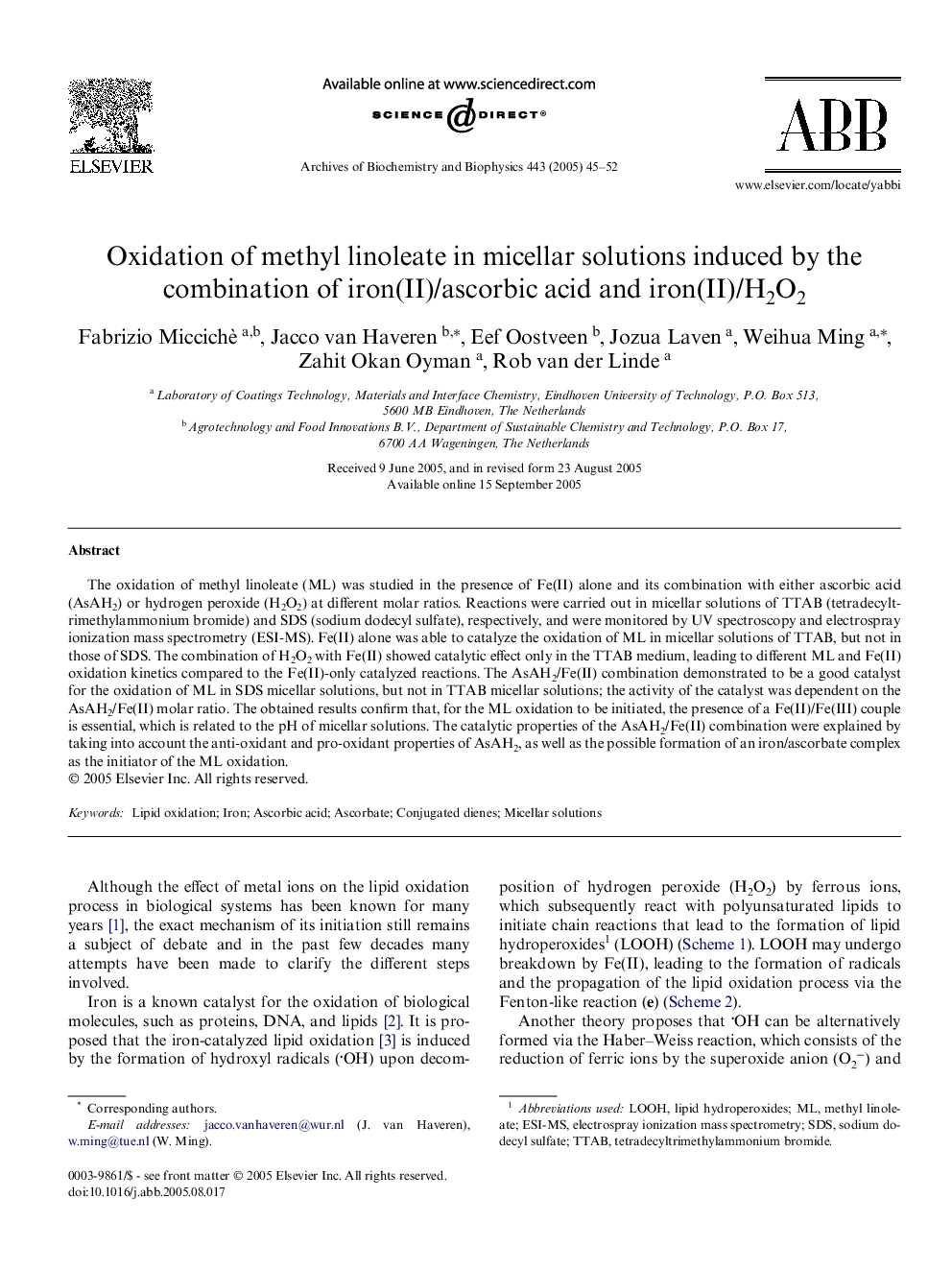| Article ID | Journal | Published Year | Pages | File Type |
|---|---|---|---|---|
| 9882085 | Archives of Biochemistry and Biophysics | 2005 | 8 Pages |
Abstract
The oxidation of methyl linoleate (ML) was studied in the presence of Fe(II) alone and its combination with either ascorbic acid (AsAH2) or hydrogen peroxide (H2O2) at different molar ratios. Reactions were carried out in micellar solutions of TTAB (tetradecyltrimethylammonium bromide) and SDS (sodium dodecyl sulfate), respectively, and were monitored by UV spectroscopy and electrospray ionization mass spectrometry (ESI-MS). Fe(II) alone was able to catalyze the oxidation of ML in micellar solutions of TTAB, but not in those of SDS. The combination of H2O2 with Fe(II) showed catalytic effect only in the TTAB medium, leading to different ML and Fe(II) oxidation kinetics compared to the Fe(II)-only catalyzed reactions. The AsAH2/Fe(II) combination demonstrated to be a good catalyst for the oxidation of ML in SDS micellar solutions, but not in TTAB micellar solutions; the activity of the catalyst was dependent on the AsAH2/Fe(II) molar ratio. The obtained results confirm that, for the ML oxidation to be initiated, the presence of a Fe(II)/Fe(III) couple is essential, which is related to the pH of micellar solutions. The catalytic properties of the AsAH2/Fe(II) combination were explained by taking into account the anti-oxidant and pro-oxidant properties of AsAH2, as well as the possible formation of an iron/ascorbate complex as the initiator of the ML oxidation.
Related Topics
Life Sciences
Biochemistry, Genetics and Molecular Biology
Biochemistry
Authors
Fabrizio Miccichè, Jacco van Haveren, Eef Oostveen, Jozua Laven, Weihua Ming, Zahit Okan Oyman, Rob van der Linde,
